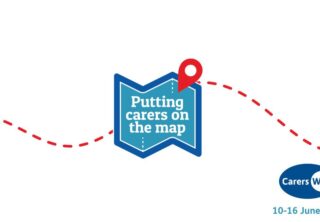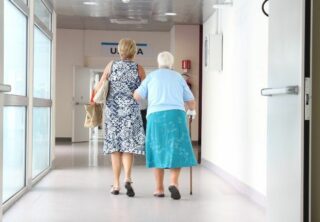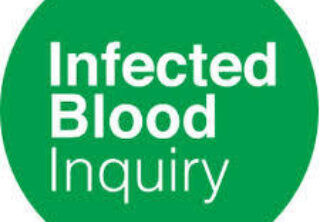How local authority adult care might approach Covid-19
The likely risks and impact of Covid-19 for adult social care is a core topic at this time and IPC Visiting Professor John Bolton was asked by an ADASS region to offer some thoughts on this. Whilst this is not a piece of research nor is it an academic document, we feel it is valuable to share his observations and comments, built through conversations with those working in the sector, reading and listening to media coverage as well as previous evidence.
Covid-19
Covid-19 is a virus that is particularly dangerous. It spreads easily, and it is likely to kill those people who are already vulnerable for health reasons, which are most people that are being helped by adult care. The risk is death rather than additional care needs. Those who survive the virus are likely to remain strong and those that don’t won’t live. Priority needs to be to ensure people can self-isolate without putting themselves at personal risk Prevention is so much better.
There is a huge spectrum with the impact of the disease for Covid-19. There can be a low-level mild impact and there can be a serious impact requiring hospitalisation. A medic working in an acute hospital advised that the current information circulating reports that there is a 70% chance that an older person with the disease will survive. Only the most serious cases will be admitted to hospital, where the expected survival is much lower. People are being discharged from hospital even though they are not clear of infection. This is of particular concern to care workers.
Current advice from the government, is that people are infectious for seven days after symptoms start. People who are very unwell will be infectious for longer so this may require longer isolation. Those with mild symptoms who remain at home should self-isolate and their carers should use full protective equipment for seven days after the first symptoms appear. Current evidence suggests that once a person has had the virus they are at much less risk.
Demand
There is evidence from some councils, of reduction in demand on adult care as a direct result of the virus. Fewer people are seeking help. Some older people are saying they don’t want their paid carers to visit, in part because they don’t have protective clothing, in part they want to self-isolate and in part families are more available to help.
Due to more families being at home, referrals from the community are likely to reduce. Essentially, people are less inclined to seek care, and to provide this themselves. Once people start to return to normality there may be a spike in referrals and demand, and this needs to be prepared for.
The biggest single risk to those who need social care help is getting the virus from which they may not recover.
There are 1.7 million people who have been told by the NHS that they are “vulnerable” and must socially isolate. It is important that social care know who from their area is in this group and that they have some kind of support. Many of these will not be known to social care and although the majority will have other means of support this ‘shielded’ group will put additional demands on local support systems. Positively, much of the response to this group is managed or delivered through voluntary and community organisations and not social care. This could provide a positive legacy of community resilience.
There are some people with disabilities who cope really well day to day e.g. people with visual impairments, who do not have eligible needs but their needs may be higher due to the restrictions in place during the lock down.
The overall challenge to the care system is to ensure that people are getting the right support (infection free) they need during social isolation. Fortunately, in many places there has been a significant surge in volunteering and community effort to help such people.
It is not likely that there will be increased demands for bedded facilities – as the more vulnerable/frail elderly won’t survive an episode in hospital. Most of those who survive will be able to return home with the right support. Added to this, care home environments are considered particularly risky by families and people with care and support needs, resulting in a growing willingness to go home, even if this presents other risks.
Added to the point above, where people are in group care environments, including supported living, people’s families are seeking to bring people home during this period. This creates complex matters of influence and best interests plus an expectation that care and support at home will be funded as the tenancy and/or bed kept open for a future return.
The challenge of meeting the demands from the NHS to free up as many beds in acute care as are possible have already been met in most places. Interestingly, far fewer people were assessed as needing additional care and support when this was required. This confirms the evidence that up to 40% of older people are over prescribed the care they need at the point of discharge from hospital.
However, there is a question about how best to support older people who have been in hospital and have survived but need a period of recuperation whilst they are self-isolating. This is best done in their own home if at all possible. The key issue is to ensure that older people are supported in their recovery, maintain as much activity as they are able and get back to their ‘usual routines’ as quickly as possible. Languishing in a care bed (or community hospital) waiting for a further assessment may not help with this. These people will not be at risk from the disease nor should they be contagious. An article in the Health Service Journal suggests that about half of those older people who are being discharged will need some form of additional support to help with their recovery. There are particular needs for those who have experienced Acute Respiratory Distress Syndrome. These people require support for their recovery, this should not be limited to a “stable care setting”. Health and social care can only achieve this together.
A long-term demand challenge is that with the emphasis on supporting more people in the short term, the majority of which will be older people, with a reduced resource, any attempts to effectively re-able people are significantly diminished. We are, therefore, likely to see a greater proportion of people developing ongoing care and support needs, placing long term demands onto social care.
The most difficult group to manage are older people with dementia (even mild dementia) who have had the virus and recover. They will need additional support to remain in their own homes. In fact, this is the group that causes most challenges to the health and care system in normal times so the additional challenges of self-isolating may lead some to think that a bedded solution is the safest option. There is some evidence of increased demands from the NHS to adult care for more deprivation of liberty assessments and best interest decisions to be made. Councils will need to be clear on their policy and if they have the resources to support these people – even in a bedded facility they may present a fresh challenge.
One approach to managing demand is to allow much more flexibility to domiciliary care providers to deliver the appropriate care that they think an older person really does need. For example, some agencies report that they can help to meet the needs of an older person with 2 visits a day (am and pm) and the four visits prescribed by social services are not necessary and very inefficient. This may mean two longer visits – say one hour each- but that is more efficient than 4 half hour visits. Most care providers know their customers and are well able to negotiate with them the best way of helping them. This could apply to all older people who have capacity to make their own decisions. Some councils already allow providers to adjust care packages up or down within pre-determined limits. Those that do this find overall that the hours delivered fall (not increase).
If there is going to be an increase in demand for adult care this is most likely to come from short term support required to assist those who have the virus but remain self-isolating at home for a week. There may also be some older people who can usually get about and manage their own needs but who are now on lists of people who should be fully isolated and don’t quite have the local support networks they need. This may require community/ volunteer effort or in some places more paid care at home.
As a number of assessments are being completed over the phone or through online media, there is likely to be a tendency for care and support to be arranged where, with a more thorough assessment this would not have been the case. It will be important to review all services started over this period to ensure that care and support is actually required.
Supply
The major challenge will be keeping enough fit and well staff that are protected who can continue to deliver the day to day care that people need. The current evidence appears to indicate that about 25% of the workforce is not available because they are self-isolating because they have the condition or are close to someone who has/had the condition. This figure does seem to vary from place to place. The significant challenge is how to ensure that care homes and domiciliary care services both protect residents from the virus and also ensure there are sufficient staff to provide the care and support people need.
If the same issues develop in the UK that has happened in Italy, Spain and France once the virus is in a care home, it is very hard to stop it spreading. In Spain and Italy they have some care homes where most of the residents have died. This is a further challenge, particularly to the longer-term viability for the care home. If older people who might have ended up in a care home are either dying in hospital or their family are offering to care for them (as they are not at work) then the viability of some care homes will impact on the care market.
There is some evidence that many care homes do not wish to take new residents whilst the virus is at large and others who have significantly put up their prices at this time. There is little councils feel they can do to mitigate this behaviour.
For those being discharged from hospital the ‘normal’ care pathways should be considered. Community support on discharge/ care at home/ bedded care. There may be a cohort who requires bedded care, but these should not be at risk. There might need to be beds procured in the wing of a care home (that can be kept separate) or in a specific building set aside for that purpose. The demand for such beds should be low as people can best be supported to manage their recovery at home. There may be a small number who did not die in hospital who will require palliative care at the point of discharge. Once people have had the virus they pose a lower (or no risk) of passing on the virus to others.
There are examples of councils buying hotel capacity to create extra beds and then staff it. How the staffing model (where from?) and environment works needs to be carefully considered i.e. hotels rarely have many accessible bedrooms or bathrooms. Additionally, the efficacy of this model needs to be considered as it surely just creates a longer-term demand for care home beds.
It is important that social care gets the same recognition that the NHS staff receive in relation to protective equipment. The community and the staff expect this.
Some care staff are less willing to work during this period. Primarily it is risky for their health without Personal Protective Equipment (PPE). This is likely to be a temporary effect.
If councils are looking to accelerate the recruitment of additional workers to supplement the reduction in supply they will need to consider carefully how these staff are going to be inducted and how they will be trained and supported in the roles that they are expected to take on. This normally is a minimum of six weeks for a care worker. There is a pool of people from which to draw for these efforts – there are reported to be very high levels of applications for all vacant jobs at present as well as enormous good will from volunteers.
The pressure to source care is such that we may be unwittingly introducing more safeguarding risk into the system that takes time to unpick after. Or course there is an opportunity to benefit from industries that have lost staff but continue to take sensible steps in recruitment.
Many younger disabled people use a Personal Assistant (PA). These people are also at risk. There is advice from the Department of Health and Social Care that councils should check that arrangements are in place to support both those receiving services and those giving their service. Some younger adults have returned to live with their families (as the safest option in the short term). However, the employment and prospects of their PAs needs to be protected during this time.
The PA market could be seen by some as more attractive because of the lower regulatory requirements. However, as PAs do not have ID in the same way as staff employed by a provider, they are getting challenged more in shops and when out. This is limiting their ability to deliver the care and support for which they have been commissioned. Additionally, the PPE access is even more challenging for this group. It’s not a good time to be a PA.
There may be increased costs to providers to ensure that they keep their services running safely. These might include additional staffing costs (agency or overtime), equipment and sanitising fluids, etc. Councils should be willing to accept reasonable additional costs from providers over the period of lock-down. The Government procurement guidance suggests open book accounting might be operated between commissioners and providers during the crisis.
Conclusion
There are many threats and opportunities created by these new circumstances. The situation is unique and not experienced by anyone previously. It is hard to exactly predict what will happen and when it might occur. It is hoped that this brief note will assist health and social care senior managers in thinking through some of the issues they will (and are) facing.
Download this blog as a PDF
How local authority adult care might approach Covid 19 10 April
For more information contact

Related News

Carers Week 10th-16th June
10/06/2024
Carers Week from 10-16 June 2024 will focus on ‘Putting Carers on the Map.’ The campaign gives an opportunity to raise the profile of carers

Admission Avoidance and Community Support
07/06/2024
IPC Visiting Research Fellow Dr Melanie Henwood offers some reflections on hospital admission avoidance and the importance of supporting people in place






